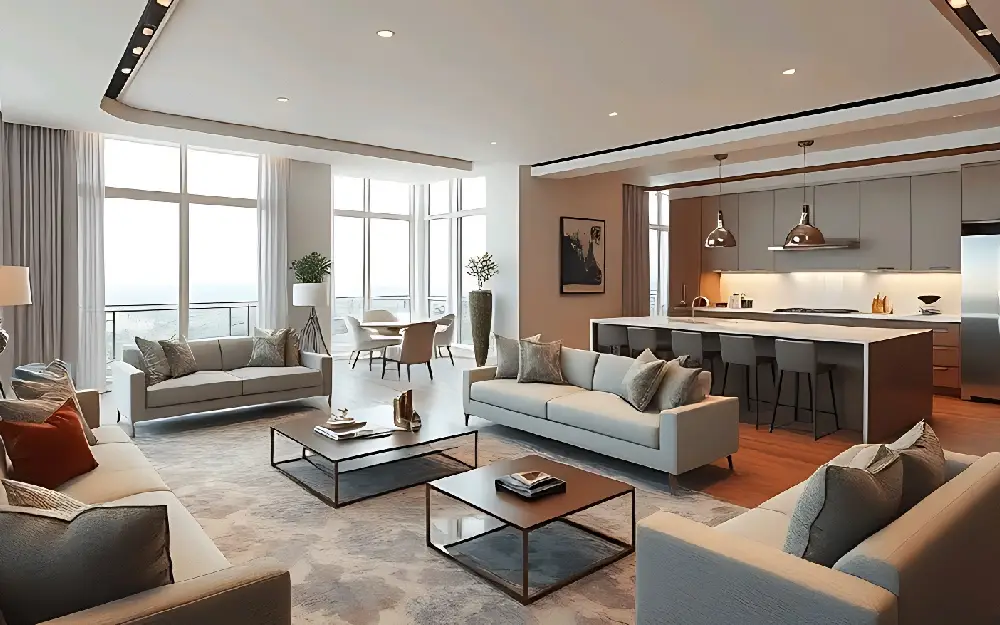
The Impact of 3D-Rendered Home Previews in Real Estate
In recent years, technology has dramatically transformed the way we buy and sell real estate. One of the most significant innovations in this space is the rise of 3D-rendered home previews. These highly realistic, interactive visualizations are changing the game for both buyers and sellers. Gone are the days of relying solely on photos or traditional floor plans to get a feel for a property. Today, 3D renderings offer an immersive, detailed experience that can help potential buyers make more informed decisions and streamline the buying process.
What Are 3D-Rendered Home Previews?
3D-rendered home previews are computer-generated images or interactive models that allow buyers to explore a property virtually. These high-quality, photorealistic visuals bring a home to life by showcasing every detail, from textures and lighting to spatial layouts and design features. Buyers can navigate through these digital representations as if they were walking through the space themselves, offering a much more engaging and detailed experience than static photos or blueprints.
How 3D Rendering Enhances the Home-Buying Experience
1. Improved Visualization
One of the primary benefits of 3D-rendered home previews is the enhanced visualization they offer. Floor plans and photographs often fail to convey the full potential of a property. With 3D rendering, however, buyers can experience the layout, flow, and spatial dimensions of the space in a way that feels realistic and tangible. Whether it's understanding how furniture fits into a room or getting a sense of how natural light fills a space, these digital models provide a much clearer picture than static images ever could.
2. Personalization and Customization
Another major advantage of 3D-rendered home previews is the ability to personalize and customize the home design. Buyers can experiment with different finishes, wall colors, furniture styles, and layouts—all within the digital model. This level of interactivity allows potential buyers to envision how they might make the space their own, which can be a deciding factor in their decision-making process. Sellers can also showcase different design possibilities, which may appeal to a wider range of potential buyers.
3. Convenience and Accessibility
3D-rendered home previews allow buyers to explore homes remotely, which is especially helpful for long-distance or international buyers. They no longer need to schedule in-person tours, which can be time-consuming and costly. With just a few clicks, they can walk through a property, inspect its features, and even examine areas they might have missed in traditional listings. This ease of access can significantly expand the pool of potential buyers and increase the chances of a sale.
4. Faster Decision-Making
The ability to explore homes virtually means that buyers can make more informed decisions more quickly. 3D previews eliminate much of the uncertainty that comes with relying on photographs or verbal descriptions. Buyers can review the space at their own pace, which can reduce decision fatigue and lead to faster, more confident choices. In competitive real estate markets, this can be a key advantage for sellers who want to close deals quickly.
5. Cost-Effectiveness for Sellers
For sellers, 3D rendering provides an efficient and cost-effective way to market their homes. High-quality 3D renderings can be more affordable than traditional home staging, which requires physical alterations to the space. Virtual staging can also reach a wider audience, as these digital images can be shared online and used in virtual tours. Additionally, 3D renderings can highlight a property’s best features, helping to ensure it stands out in a crowded market.
The Future of 3D Rendering in Real Estate
As technology continues to evolve, 3D-rendered home previews are expected to become even more sophisticated. With advancements in virtual reality (VR) and augmented reality (AR), buyers may soon be able to experience homes in even more immersive ways. Imagine being able to wear a VR headset and walk through a home in real time, or using AR to see how a piece of furniture fits into your living room through your smartphone camera. These technologies will further enhance the home-buying experience, providing unprecedented levels of engagement and interactivity.
Conclusion
The impact of 3D-rendered home previews in real estate is undeniable. These high-quality, interactive visualizations are revolutionizing the way buyers and sellers interact, providing greater clarity, convenience, and personalization in the process. For buyers, they offer an immersive, realistic experience that helps them visualize the potential of a property with unmatched detail. For sellers, they provide a cost-effective way to market homes to a wider audience and speed up the sales process. As technology continues to advance, 3D rendering will undoubtedly play an even greater role in shaping the future of real estate, making the home-buying journey more efficient, accessible, and exciting than ever before.
